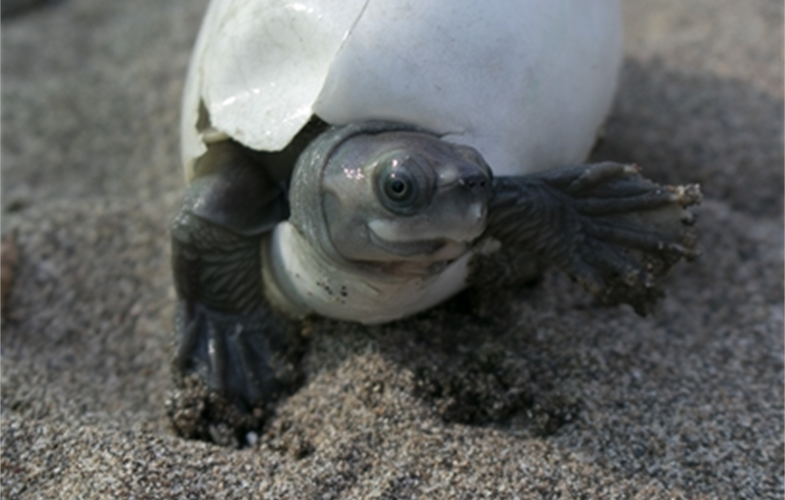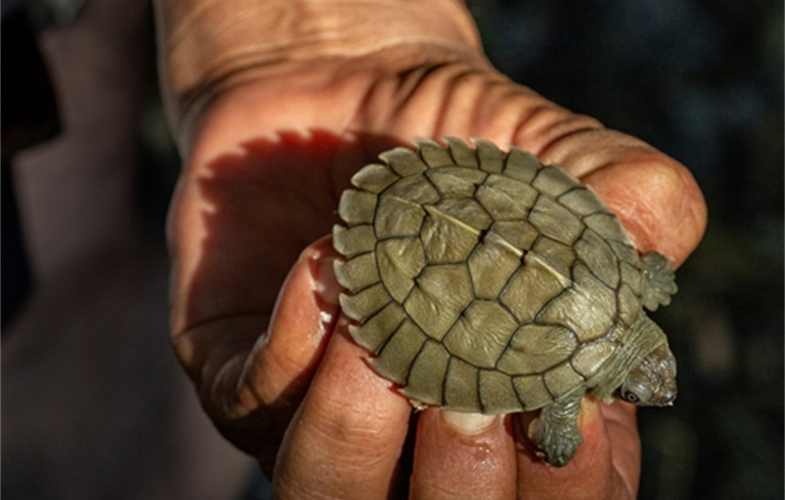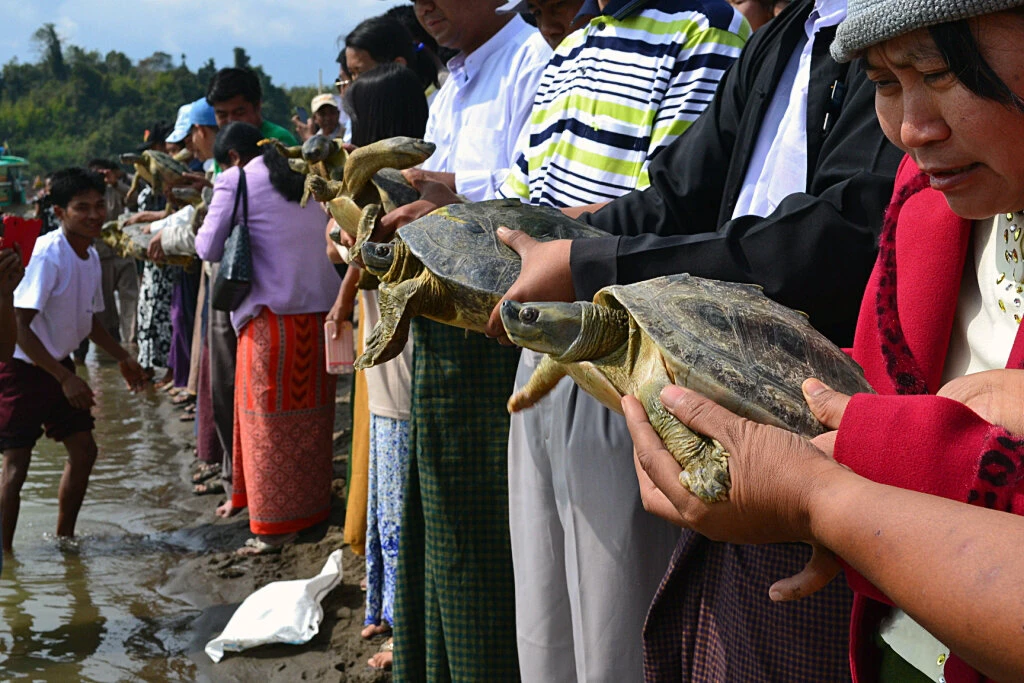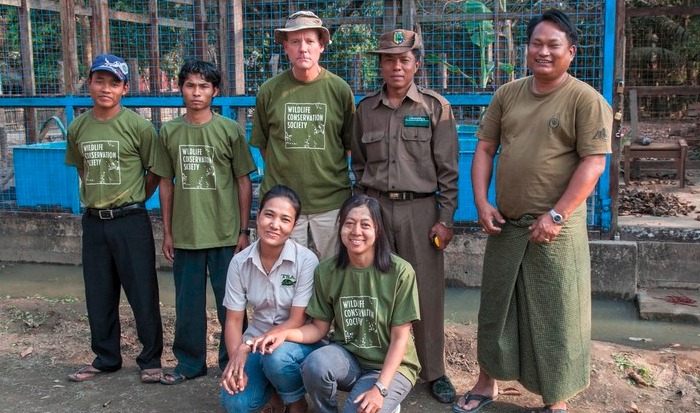
Once considered extinct, conservationists rediscovered Burmese Roofed Turtles in the wild in the early 2000s and have since saved the species from extinction and raised over 1000 of the “smiling” turtles for release into Myanmar’s rivers.
The Turtle that Almost Went Extinct
The Wildlife Conservation Society (WCS) and Turtle Survival Alliance (TSA) last month released a series of images showing hatchling Burmese roofed turtles (Batagur trivittata) – considered one of the most endangered turtles in the world. The species was believed to be extinct until WCS/TSA conservationists, along with the Myanmar Forest Department, rediscovered it in the wild in the early 2000s.

Burmese roofed turtles are large, aquatic, herbivorous turtles found in Myanmar’s river systems
The Burmese roofed turtle—nicknamed the ‘smiling’ turtle, because they appear to have a permanent grin—is one of the most endangered turtles in the world, according to the Wildlife Conservation Society (WCS).
Conservationists from WCS, Turtle Survival Alliance (TSA) and Myanmar Forest Department rediscovered the turtles in the wild in the early 2000s and have since worked to bring them back from the brink of extinction.
In a press release last week, WCS claimed that the turtles are so poorly studied that “no one had ever gotten around to describing the hatchlings until a recent study published in the journal Zootaxa.”
The Burmese roofed turtle is a large, aquatic, and herbivorous turtle found in major river systems of Myanmar.
The steady decline of its population resulted from chronic egg collecting, subsistence harvesting of adults, and loss of critical nesting habitat. Sadly, by the 1990s the species became a candidate for extinct status.
However, several years later, in the early 2000s, an American turtle collector purchased a live Burmese roofed turtle at a Chinese wildlife market. Soon after, two populations were discovered in the Dokhtawady and upper Chindwin Rivers in Myanmar.
“Today, sandbanks used as nesting sites by females are monitored, and eggs are collected and incubated under natural conditions at a secure facility in Limpha Village, Sagaing Region, Myanmar,” WCS said in the press release. “The offspring are ‘head-started’ for eventual repatriation into the Chindwin River.”
Source: Tank’sGoodNews

Roofed turtle no longer at risk of extinction
According to WCS, the captive population of the turtles is now approaching 1000, which means the species is no longer in danger of biological extinction.
“Complementary conservation efforts are focused on the remaining wild population, which consists of five to six adult females and perhaps as few as two males,” said WCS.
Earlier this year, one particular female Burmese roofed turtle who has never been known to produce fertile eggs deposited a clutch of 19 eggs—14 hatched in May.
She surprised conservationists, who attributed the unexpected births to the introduction of 20 young males raised in captivity and released into the river in late 2018.
Conservationists collect eggs laid by the remaining wild females in February and March each year and incubate the eggs at a remote riverside village.
Eggs hatch in May and June, and the babies are raised for for 5-6 years in captivity before conservationists return them to the river.
“Captive-breeding groups have also been established at several zoos and wildlife sanctuaries in Myanmar to produce additional hatchling turtles for eventual release,” said WCS.
While population growth has been gradual, it looks as though the Burmese roofed turtle is going to be okay. Sometimes, slow and steady wins the race!
Source: Tank’sGoodNews




HELPFUL THINGS YOU CAN DO TO SAVE TURTLES AND TORTOISES FROM DISAPPEARING
“These gentle animals have been around for 200 million years, yet they are rapidly disappearing as a result of smuggling, the exotic food industry, habitat destruction, global warming and the cruel pet trade.”says Susan Tellem, a founder of the American Tortoise Rescue. With assistance from people like you and organizations like the ATR, all species of tortoise and turtle can be protected, to have a fighting chance to see a brighter future.